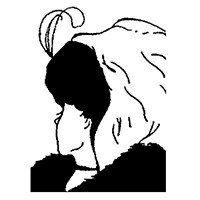You are here
Top-down influences on ambiguous perception: the role of stable and transient states of the observer
The world as it appears to the viewer is the result of a complex process of inference performed by the brain. The validity of this apparently counter-intuitive assertion becomes evident whenever we face noisy, feeble or ambiguous visual stimulation: in these conditions, the state of the observer may play a decisive role in determining what is currently perceived. On this background, ambiguous perception and its amenability to top-down influences can be employed as an empirical paradigm to explore the principles of perception. Here we offer an overview of both classical and recent contributions on how stable and transient states of the observer can impact ambiguous perception. As to the influence of the stable states of the observer, we show that what is currently perceived can be influenced (1) by cognitive and affective aspects, such as meaning, prior knowledge, motivation, and emotional content and (2) by individual differences, such as gender, handedness, genetic inheritance, clinical conditions, and personality traits and by (3) learning and conditioning. As to the impact of transient states of the observer, we outline the effects of (4) attention and (5) voluntary control, which have attracted much empirical work along the history of ambiguous perception. In the huge literature on the topic we trace a difference between the observer's ability to control dominance (i.e., the maintenance of a specific percept in visual awareness) and reversal rate (i.e., the switching between two alternative percepts). Other transient states of the observer that have more recently drawn researchers' attention regard (6) the effects of imagery and visual working memory. (7) Furthermore, we describe the transient effects of prior history of perceptual dominance. (8) Finally, we address the currently available computational models of ambiguous perception and how they can take into account the crucial share played by the state of the observer in perceiving ambiguous displays.

